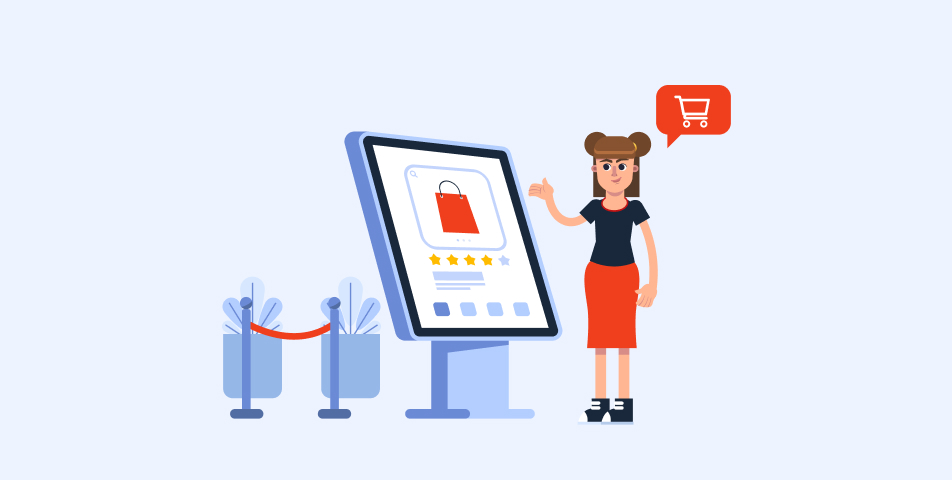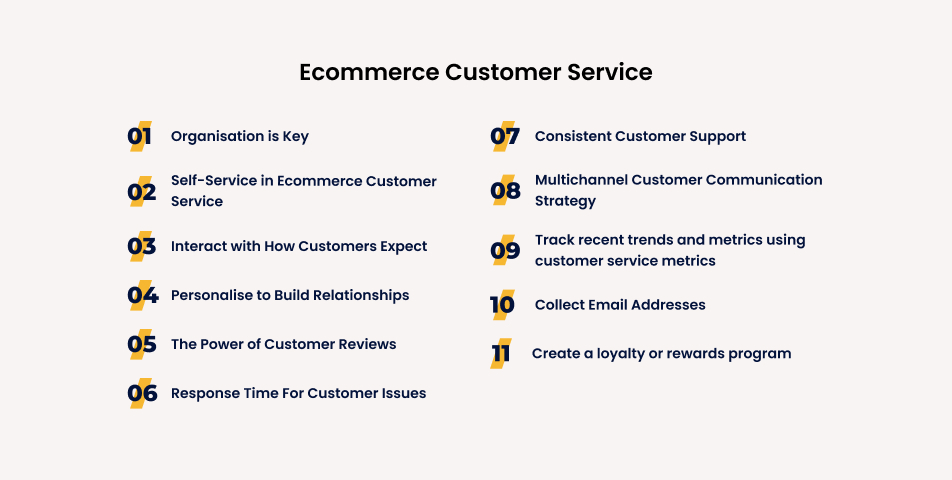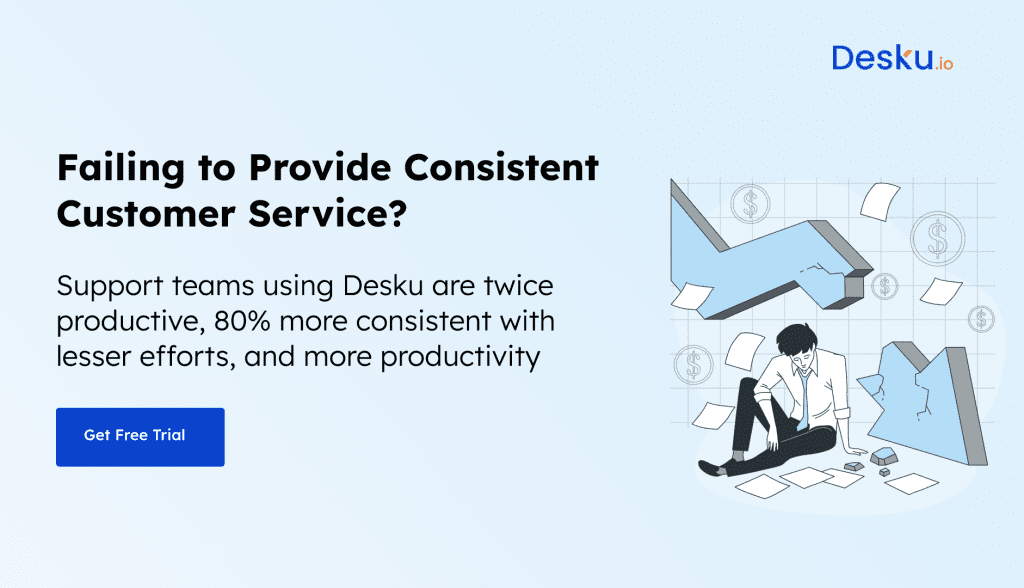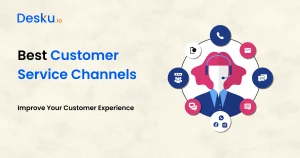Ecommerce customer service is no longer ‘just another segment’ of an e-commerce business. Do you know that every single month over 206 million people all over the world visit Amazon?
Furthermore, in 2019, 263 million buyers in the United States had purchased things digitally. By 2024, the figure is estimated to reach a whopping 282.7 million.
This convinces us enough about the potential of online shopping and the huge impact it will have in the shopping industry in the upcoming years.
And with growing customers, the need for e-commerce customer service is also growing at a leopard’s pace.
In this article, we discover the best ways to boost ecommerce customer service and how that wins you in your business.
Key Takeaway :
The top 11 ecommerce customer service best practices to implement include: effective organization, self-service options, interacting with customers as they expect, personalization, leveraging customer reviews, maintaining a quick response time, providing consistent support, adopting a multichannel customer communication strategy, tracking recent trends and metrics, collecting email addresses, and creating a loyalty or rewards program. These practices are essential for enhancing the customer experience and building long-term relationships with customers.
What is Ecommerce Customer Service?

If a business has customers, its customers will definitely have queries. Ecommerce tools like the help desk are the one that solves them.
This is the simplest way of explaining e-commerce customer service.
To boost ecommerce customer experience is the segment of an online business where a support team of skilled professionals solves problems for customers, helps them make a purchase, gives additional information about a product or service as and when required, and helps give them a smooth customer experience.
Microsoft’s study has revealed that 95% of customers online believe that customer service is essential to build brand loyalty.
“You might rest assured that you are putting the right efforts into your e-commerce customer service and that is what 80% of businesses believe about themselves, but sadly, for customers, only 8% of them agree”
Providing customer service does not boil down to the massive efforts you are putting behind them or the tonnes of employees you are putting after them to promptly help your customers out, but sometimes, it is a mix between efforts and the right strategies.
Our customers today are looking to be served and be served well for that matter.
You are doing everything right, and yet cannot figure out what is going wrong with your customer service.
If that sounds like you, do not worry – we have the right hacks that might help.
11 Best Practices for Ecommerce Customer Service

1. Organisation is Key
Everything falls apart without great organisation skills.
In a company, if you do not have an efficient and organised customer service team, even with lots of effort, you will still fail.
Your service team should learn effective organisation, keep track of customers and their conversions or queries, and should be equipped with the necessary tools required to carry out the process easily.
Tools such as shared inbox by Desku.io saved replies to reply to repeated, common questions from customers, and collision detection tools can help your customer service team in giving a better service and promote an enhanced experience.
Read More About:Top 6 Benefits of Customer Service Shared Inbox in Your Business
2. Self-Service in Ecommerce Customer Service
Data revealed that over 60% of US consumers prefer self-service for simple customer service tasks.
Automation can truly do wonders for your business! That is why 77% of the customers have resorted to using the self-service customer support portal.
The most likeable is Knowledge Base among all the other self-service portals, says Forrester. Mark your customer success journey by leveraging the freedom of problems on their own.
While making a customer go through a purchase or even an inquiry, you have to bear in mind that they will choose the line of least obstructions and if something gets too difficult or complicated, they will simply exit.
Use effective automation like Desku’s AI chatbot and HelpDesk features where you get all queries in one platform itself.
Read More:Customer Service Chatbot: Boost Your Customer Experience
3. Interact with How Customers Expect
Well, it is a fast-paced world. Where we are avoiding our friend’s calls on weekends, who would like to take customer service calls on weekdays?
So, interact the way your customers want to interact or reach out to you – through Twitter, emails, live chat options, etc.
For ecommerce customer service best practices, it is crucial to learn a customer’s behaviour and preferences.
Forrester’s data shows that 31% of the customers like to reach you via Twitter, 33% through Facebook and 45% have resorted to using online chat.
Microsoft has confirmed that over 66% of the customers used not one but three different channels to contact customer service online.
Hope you have learned your lesson by now. So without further delay, instead of the traditional phone support system, set a multi-channel customer service strategy if you want to bag customers with varied preferences.
4. Personalise to Build Relationships
With the emerging importance of effective customer support, our personalisation game has got to be on point.
Yes, there are seldom times when the customer just does not care, they just want to get done with the little query they have as soon as possible, but similarly, there are also times when the customer does care about how you are talking to them or approaching them with your service.
Offering guidance and showing things to customers thoroughly as a guide map is one such time when your customers are taking keen notice of you and how you address them.
Would you believe that 33% of customers left their association with the business because they lacked personalisation?
Furthermore, 71% of them have expressed frustration over un-personalised experiences.
For proactive customer service, it is crucial that you introduce effective personalisation into your business and successfully provide good ecommerce customer service.
5. The Power of Customer Reviews
For the best practice to improve your customer experience, listen with ears wide open to what your customers have to say.
Most businesses may try to find strategies here and there after days of research and idea implementation to build a good strategy plan that works with the customers, whereas, your customers could have exactly stated that for you days ago in a simple review.
Whether it’s on your website’s page or through personal emails or social media accounts, customers always let us know how we are performing. Listen to them and act accordingly.
If not, personalise emails as a customer service representative and ask them for quick customer feedback.
If recurring people aren’t liking something, that needs to be fixed as soon as possible. If recurring people like something, that strategy, product, or service should be implemented thoroughly and in better versions.
6. Response Time For Customer Issues
In E-commerce platforms, no one likes slacking or delays. Everyone wants speed because, on digital platforms, speed is not too great of a deal.
Know this – Your customers like speed as well. So when they ask you something, they are hooked onto the desire for it for a few moments only and then it passes.
This happens especially if your customers are looking for a shopping experience, that is – to buy something from you, and in the fit of excitement to have the product, they inquire more about the product.
If you go days without replying or even take a few hours, the want of it might evaporate.
Therefore, master your response time if you want to keep customers hooked to your business, build trust in your organisation, have a personalised interaction, and then look forward to keeping connected with you in the future.
7. Consistent Customer Support
It is stated that consistent customer support helps customers increase trust and can rely on your business for what they really expect. Consistent customer support retrieves the reputation of the business. Retention is always a tough job, but considering the Customer Support Platform like Desku, it becomes much easier to give proactive answers.
69% of US online adults shop more with a retailer that offers consistent customer service both online and offline
Now imagine, if you do not provide or cop up with the customers on a timely basis, they are going to think that they are not interested in selling to their customers and therefore they won’t show interest. That is human nature, right? We would also not buy from someone who is not interested in selling or wants to take care of post-purchase.

8. Multichannel Customer Communication Strategy
Giving a range of options to customers to choose from makes a good impression every time. Whether it is a product range or the form in which they want to receive assistance. Setting up a multichannel customer communication system can be beneficial in building a feeling of all-round support to the customer.
Very common channels are:
- Email: Provides a professional and in-depth view to the customer.
- Social Media: Useful for propagating updates to larger customers.
- Personal message: This can be customised keeping in mind the preferences of the customer.
- Phone call: The best way for one-on-one conversation that leaves no doubts in queries and resolves everything quicker.
9. Track recent trends and metrics using customer service metrics
With stacks of customer behaviour data, query emails, and feedback comes the responsibility of organising, analysing, and putting them to best use. Customer service metrics can not only help in understanding the buying trends of your clients but also keep a check on your team’s performance.
- Track response time: Look at how much time takes your team to check a new query.
- Problem resolution: Analyse how long it takes on average to solve one query and why so.
- Check tickets: See how long it takes for a customer to get their query resolved after raising a ticket.
10. Collect Email Addresses
It doesn’t take a lot of time to provide an email. That’s why customers hardly resist when you ask for it. This insignificant-looking data i.e. new customer’s email address can do wonders for your company. You can urge customers to check out the website for new products and make a purchase on limited-period offers. Also, you can ask for feedback on the website, and customer service and provide a customised experience.
11. Create a loyalty or rewards program
Retaining loyal customers is essential and in this arena, Loyalty programs work like charm. For your Ecommerce business, loyalty programs can look like this:
- Points associated with buying a number of products or spending amount which can be added and used as a whole in future.
- Offers and sale of products at a special price only for long-term customers.
- Customisation options on bundles or special products and services.
Read More:11 Best Ecommerce Help Desk for 2024
Conclusion: Best Practices For Ecommerce Customer Service
Mastering ecommerce customer service takes more strategies and keen observations than effort.
The ecommerce help desk is one of the best practices that any business should hold up in order to provide consistent support to the customers because delays in replies are never appreciated.
If you take time to learn your customer’s behaviours and then practice ecommerce customer service, then only you will be able to provide the best ecommerce customer support.
Customer loyalty and customer satisfaction are the major goals for a customer service agent and only by providing good customer service, can you enhance a customer journey and retain them over time.





